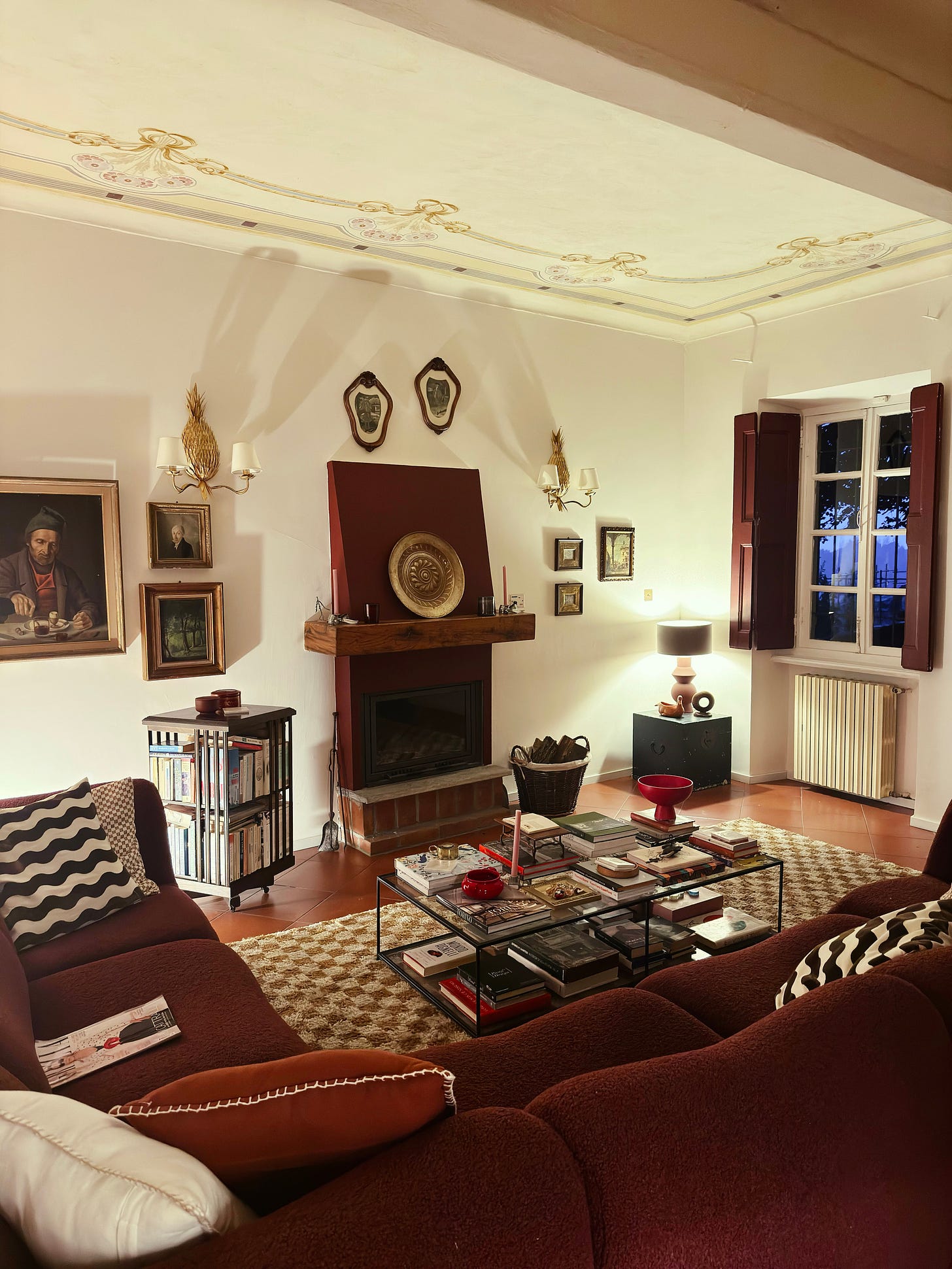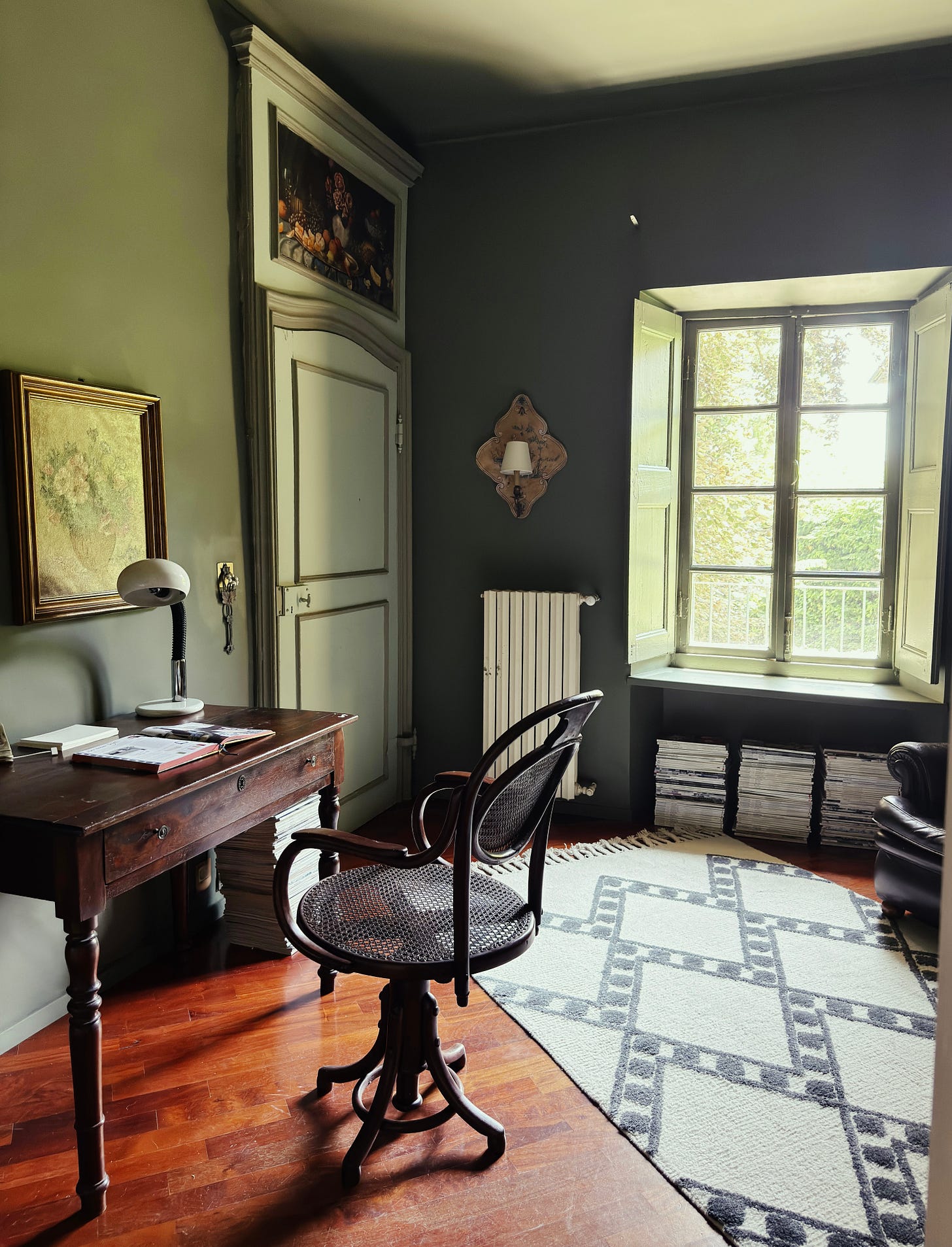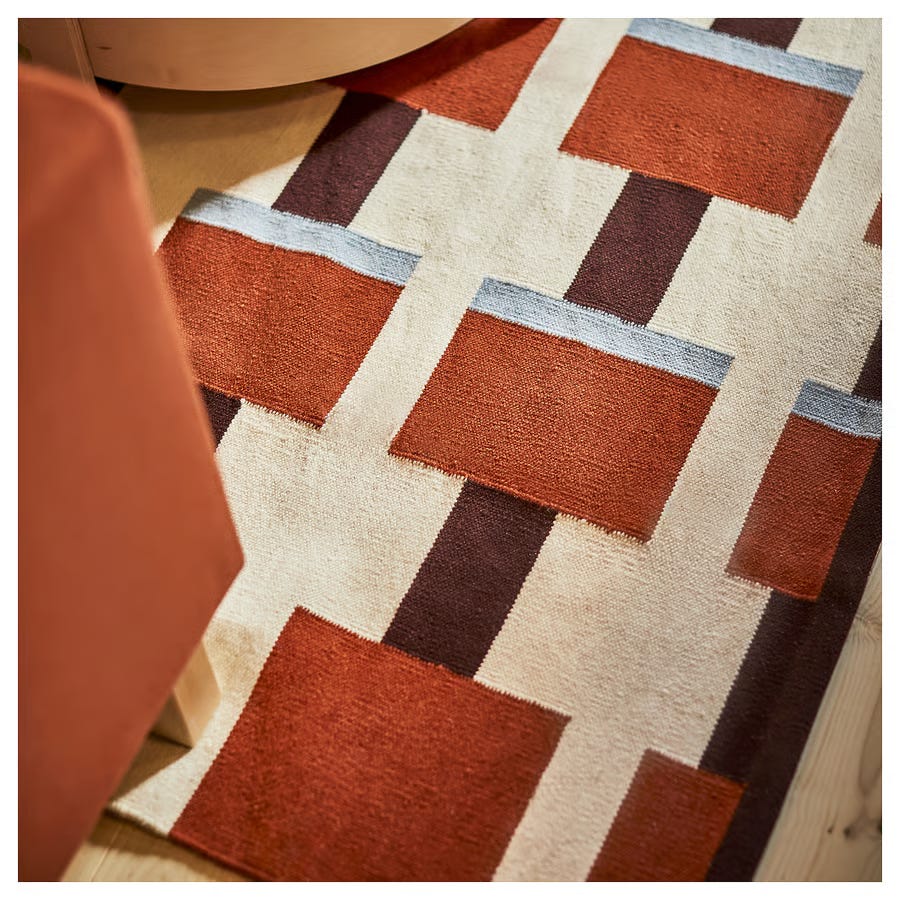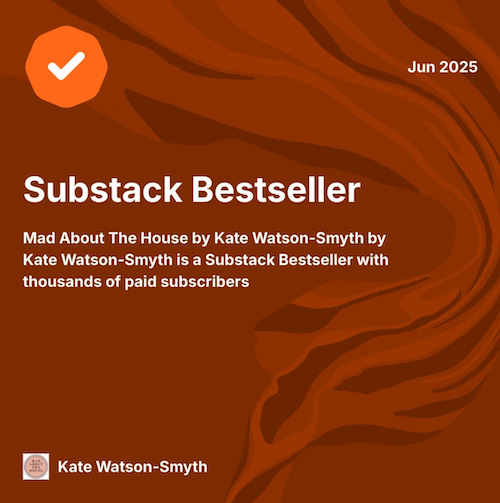How a big budget can ruin an interior design scheme
Homes actually look better when you have to work within your means and come up with creative solutions – rather than simply throwing money at the walls.
It's not “fast decorating” that ruins a room – although there are plenty of arguments in favour of doing things slowly – it’s having the money to do everything in one go.
Having done up six houses, and worked on countless other projects, I have come to understand that being able to buy everything you want at the outset can not only stifle your style but detract from the character of your house.
I mean, yes, I always wish I had more. At home in London my son’s loft room remains unfinished while he is in student housing, and our scruffy back yard aspires to be a charming townhouse garden. In Italy I have 24 rooms with wooden shutters in need of (expensive) replacement. And of course I’d love to be able to simply wave the chequebook at those things.
But inside the Italian house, where I had to design new bathrooms around existing plumbing, work with a slightly odd 70s-style fireplace, and retain the previous owner’s ceramic floor tiles, the result is arguably more authentic to the building and allows it to hold on to its history.
It’s a little like patching up a much-loved sweater so you can still wear it, rather than throwing it out and buying a new one. Or re-covering an old armchair so it can live to welcome a new generation of weary sitters. In both cases the originals remain but with new chapters added.
The spot between not having quite enough money to do what you want and adequate funds to spend without having to think twice can be where the magic happens. You are forced to be more creative and often, what starts out as a compromise can lead to something so much more interesting.
This, then, is a post with thoughts on not having enough money to do absolutely everything you want. In praise of being broke, as it were. Because not having enough money to do what you think you want just means you will have to think harder. You will have to be more imaginative, to find a workaround. And the result? It will, I predict, be more authentic and more personal to you and the house you are working on.
This post is free to read, if you like it you will find many more pieces that offer practical advice and ideas, house tours and interviews with experts if you become a paying subscriber. You will also be able to join my monthly Drop-in Design Clinic and bring me your decorating dilemmas to solve.
Take this big old house in Italy, parts of which date back to the 1700s. It was once the home of Celestino Sachero, the head of King Vittorio Emmanuele II’s army. The streets around are named after him and there is a bust of him on the side of the church next door.
When we first viewed it we looked at the terracotta-style floors laid diagonally and immediately promised to rip them out in favour of prettier, patterned encaustic tiles - the sort that you see all over southern Italy (we are in the north). Upstairs we looked at the red-tinged narrow wooden floorboards, also running diagonally, and vowed to replace them with straight, wide boards across each room.
We looked at the 70s-style fireplace in the main sitting room and wondered if we could replace it with a more impressive, marble one. We thought about getting rid of one of the bedrooms to create another bathroom.
Fantasies of a free-standing kitchen created from vintage cupboards, with a fully tiled pantry behind antique glazed wooden doors took over my Pinterest boards.
Then we got the keys. And with them came the budget – and initial costs from the architect and builders. And the two did not match. So we started to rethink. Well, we had to rethink. With a full rewire, two boilers to replace, four bathrooms to refit and two kitchens that needed updating (not to mention the decoration of all the other rooms) there was no way the plumbing was being moved or extended. We walked around the house four times logging all the sockets and switches and opted, for the most part, for straight replacements rather than adding to or moving what was there. (Expect a post in praise of rechargeable lamps in the near future.)
The tiled and wooden floors? Well it was clear they were staying put. The fireplace? Who even mentioned anything about that?
Two years later, sitting in the room with the newly repainted fireplace (we eventually decided to make a feature of it) we feel very grateful that we weren’t able to come in and throw money at a replacement. It’s a quirk of the house – as well as being highly efficient. The terracotta-tiled floors are a classic style of many Italian houses – and everyone there seems to lay their floorboards diagonally. We did move a couple of internal doorways to create an en suite bathroom – but the room that we originally wanted to convert became my office instead, and with its still-life paintings over the doors and its central position in the house it’s much better that way.
Where there weren’t enough electricity sockets we have added rechargeable battery lamps. Where the draughts come in I have made “sausage dogs” (my 24-year-old will never not be disappointed that they don’t look like actual dogs) and I’m currently making insulating curtains to cover archways and open doors in the colder months.
On the top floor the old, stained carpets were pulled up to reveal… concrete floors. There was no money for new tiles and so a new thin skim of concrete was added and painted and it turns out it’s perfect. It’s lovely to walk on and, in the green sitting room with its velvet sofas and Liberty wallpaper, brings a welcome element of rough to the luxurious finish.
In the bedroom next door, with its gelato pink walls and yellow woodwork, the pale pink concrete works as the perfect foil.
The local vintage markets have been a joy – from the €5 shelf that holds my morning coffee while I free up a hand to open the door into the bedroom, to the dozens of paintings, sometimes for as little as €10, that are starting to fill the walls. We are taking this house into a new chapter, but the story of what came before is still very present.
I can honestly say at this point that not having the money to do everything that was on our original list has resulted in a house that I love so much more for all its quirks and foibles.
Years ago I had a friend who dated a friend of my husband’s. A few months in I asked her how it was going (we had never felt it was a match made in heaven). “Oh,” she said, “You know how it is at the start when you need to mould them into what you want them to be. We’re getting there.”
Unsurprisingly the relationship ended in spectacular and explosive fashion not long afterwards. Houses can be similar; if you want to marry one (by which I mean buy it as opposed to dating via rental) you need to understand who it is and love it for that. By all means dress it up a little and trim its beard, but don’t spend money fundamentally changing its personality. If that’s what you want to do I suggest you keep dating until you find the house of your dreams.
When it comes to working within a budget that is slightly too small you really need a plan. I appreciate that trawling round vintage markets may be less fun if (say) you have small children and need something to sit on in a hurry – but that’s why a list of goals and ideas is even more crucial when the budget is tight.
You must have a clear idea of what each room is for, what colours you want to use in it and what furniture you need as a minimum. In other words if your budget is tight it is even more important that you have a plan.
Our builders left on 22 December 2023, and we had eight guests arriving for New Year. To that end I made sure that every room had a bed, a bedside table, a lamp and a rug. A mammoth trip to Ikea sorted bedding and towels. Two years later we are still “colouring in” the spaces with a picture here, a wall light there, and some shelves for books and ornaments.
Another good tip for those on tight budgets is that big really is better. A large lamp will look much more expensive than a small one. If you find a base you love there are masses of online tutorials on painting plain shades. Buy the biggest rug you can afford, or alternatively a piece of carpet, and have the edges whipped or bound. Then make like the Victorians and just paint round the edge of the floor - no need to spend time and waste paint sanding and prepping the middle.
But if you do fall in love with something expensive, see if you can use it in a smaller quantities. This is particularly true of tiles. Use cheap subway/metro tiles in the shower and something knockout behind the basin. In this case you can often fix them yourself, as you can choose the size of the area you want to cover – using whole tiles, no cuts required – and simply glue them to the wall and grout when dry. (See online tutorials.)
The silver tiles below (from my old house) were so expensive that when we bought them in 2010 we could only afford six. So we put three over each basin, added a plain Ikea mirror and created frames from the leftover wood which we had used to make the vanity unit –itself a slab of reclaimed laboratory worktop from Retrouvius.
The basins were wall mounted with ceramic columns to hide the pipes. There was just space between basin and base to allow us to slide that length of wood between the two parts to create the impression of countertop basins. I guess we could have removed the bases to create more storage, or boxed them in with something smaller and neater but we never did.
Now if you will indulge me a small plug here: I have a course on Create Academy that is full of ideas and tips on interior decor. Their model is now about buying a subscription and accessing several courses, so I recommend Tess Newell on painting furniture and murals, and Micaela Sharp on basic upholstery. Use eBay or Haines Collection for fabric remnants.
Decorating like this is a process that will take many years and involve some changes along the way – tastes change and so will your opinions – but if you focus first on the outlines and getting them right, you can colour in for as long as you like and within your set budget. I’m now so glad we didn’t have enough money to rip out tiles and swap rooms around.
And don’t knock Ikea. Their pieces are endlessly customisable with a good base paint and some imagination. Left as they are you can always sell things on, and at the time of writing their new Stockholm 2025 collection is outstandingly good – especially the rugs.
We bought cheap bed frames from Maison du Monde (no longer available in the UK, sadly) and added the best mattresses we could afford. We made our own headboards – some from padded throws from Caravane and some by repurposing a pair of antique bed frames picked up on eBay for €130. I fully intend to add a curtain behind this one below as soon as I find the right fabric. This will up the luxe look exponentially but won’t cost the earth as I will probably use a vintage bedspread, or even a couple of linen panels from the high street.
Paint is the most transformative thing you can do. Buy some frog tape and mark out stripes or panels or checks. If the walls seem daunting, have some fun with the woodwork – in many cases this won’t even involve a ladder, and you can even lie down to do a skirting board. Pro tip: Slide a piece of clear perspex between floor and board to save you taping the floor or carpet and move it along as you go.
Of course you will always wish you had more money than you do – not least so you can pay someone else to paint the walls for you – but you might just find that without it you come up with ideas that in the end you love more, and not just because you did them yourself.
Shortly after we finished (and I use that term loosely) a neighbour came to see what we had done to the house. A friend of the previous owners, she remembered evenings over many years, sitting around the dining room table, or in one of the reception rooms, and latterly had visited the widowed lady who had remained there with her grand-daughter while the house was on the market.
We took her round every room pausing to explain what we had done and how we had chosen the colours – all of them based on original shades round in the house. Eventually we landed back in the kitchen with coffee.
“Don’t take this the wrong way, “ she said. We braced.
“It’s sort of like you haven’t done anything.”
And that, for me, felt like the greatest compliment of them all. And one which, had we had more money to pay for renovations, she might not have paid us.
This is a free post for all and is an example of the kind of tips and ideas you will receive if you sign up to be a paid subscriber. A subscription also gives you access to my monthly Drop-in Design Clinic, and even if you don’t get to ask your question to me live on video, I also do a round-up of all your design dilemmas.
Coming up in July: How to choose the right shade of pink (a follow-up to my previous piece on choosing the right white), Let’s Talk Styling – and a house tour with India Knight, long-time journalist and Substack’s global no 1 in the design category, whose book of her newsletter will be out later this year.
Thank you so much for reading and subscribing. It is down to you that this newsletter can continue. If you have enjoyed it please do like and share. It really helps.






















From the pictures I’ve seen of your house, the decoration is amazing, so it’s fascinating to learn what you didn’t do! I always felt that the previous owners of my flat tried to cover up all its quirks and make it into something it’s not - although I’m forever grateful they covered over the 1970s orange and brown tiles! Absolutely agree that not having the budget to do everything at once makes for a more thoughtful outcome, honouring the house itself.
Such a great post Kate, and so lovely to see more of you beautiful home. You are absolutely right about budget, and while I am in the middle of my own reno (downsizing to a little Victorian terrace after divorce), all my extravagant plans have had to be downsized too. But it has been part of the adventure to find solutions within my very tight budget, and realise that the house will be all the better for it. May I add to your already mentioned resources: reclamation yards are great sources of all sorts of goodies that can be cleaned up and reused. And I've scored some great fabric and wallpaper from the Haines Collection too!